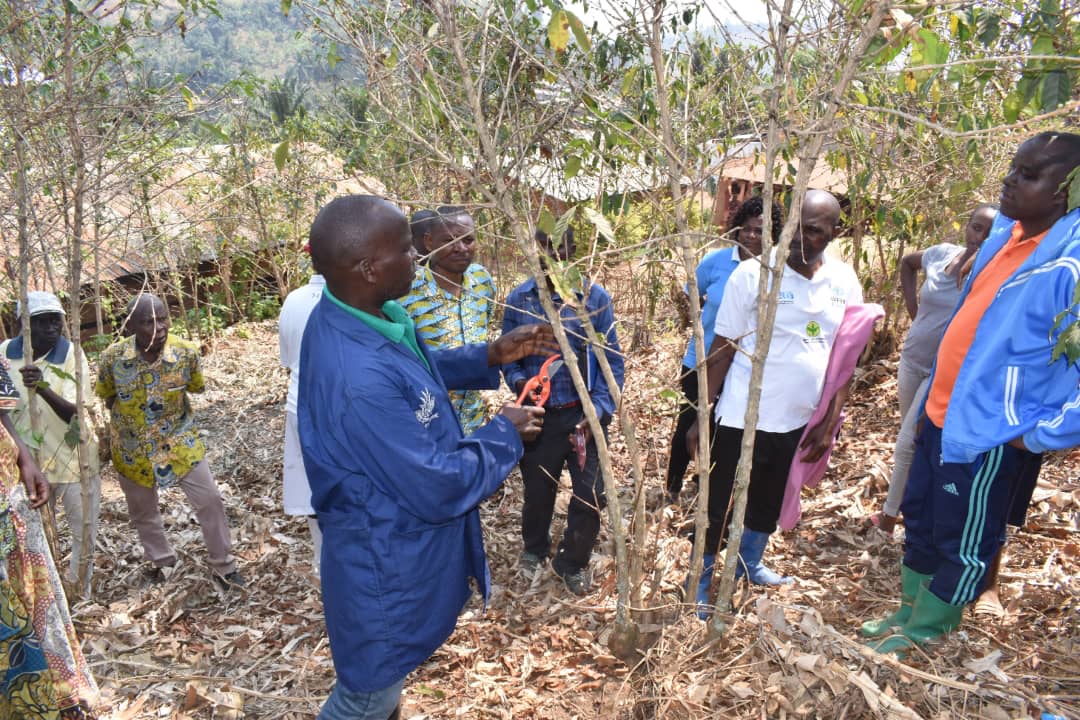BUJUMBURA, September 30th (ABP) – The communal agronomist of Kanyosha in Bujumbura province (western Burundi), Trinité Nduwimana, is convinced that good coffee production depends on maintenance by pruning the coffee field, their fertilization with mineral and organic fertilizers and spraying the field to protect it against the coffee bug.
In an interview with a check by ABP on Thursday, September 26, 2024, after a demonstration of coffee tree pruning and laying litter in the field, Trinité Ndiwimana first called on coffee growers to follow the advice of agronomists and agricultural instructors at their disposal. He said that three types of pruning are considered in coffee growing: maintenance pruning of coffee fields; pruning to increase production and pruning to renew coffee fields.
According to him, the first pruning, the maintenance pruning, is done by removing the small dry branches on the trunk of the coffee tree as well as all the unproductive branches and the coffee grower does it every time they go to the field.
The second pruning, that of increasing production, is done once a year, after the harvest and one cuts the weak branches and the unproductive branches at the foot of the coffee tree and checks if the foot has more than three shrubs; they cut the surplus in order to keep three that are vigorous and productive, the 3rd and last type of pruning is that of renewing the old coffee fields.
He reported that it is only done when the field is old and when production is increasing. To that end, the coffee grower is called upon to cut all the shrubs on all the feet in the field, after the regeneration of the feet, they will have to cut the weak shrubs in order to keep three that are vigorous and will start producing good coffee.
In addition to pruning, we must plant grass in the coffee field at 30 cm from the base and perpendicular to the erosion and slope of the soil, insisted Nduwimana, indicating that we must respect 30 cm at the base so that insects do not climb to contaminate the coffee trees.
We do this with the beginning of the dry season in June when there is still moisture in the soil until February so that these grasses rot and become organic manure and we will add chemical fertilizers, the agronomist said.
Note that this follows the desire of the Burundian government to revalue coffee cultivation by increasing coffee production and diversifying sources of foreign currency.

